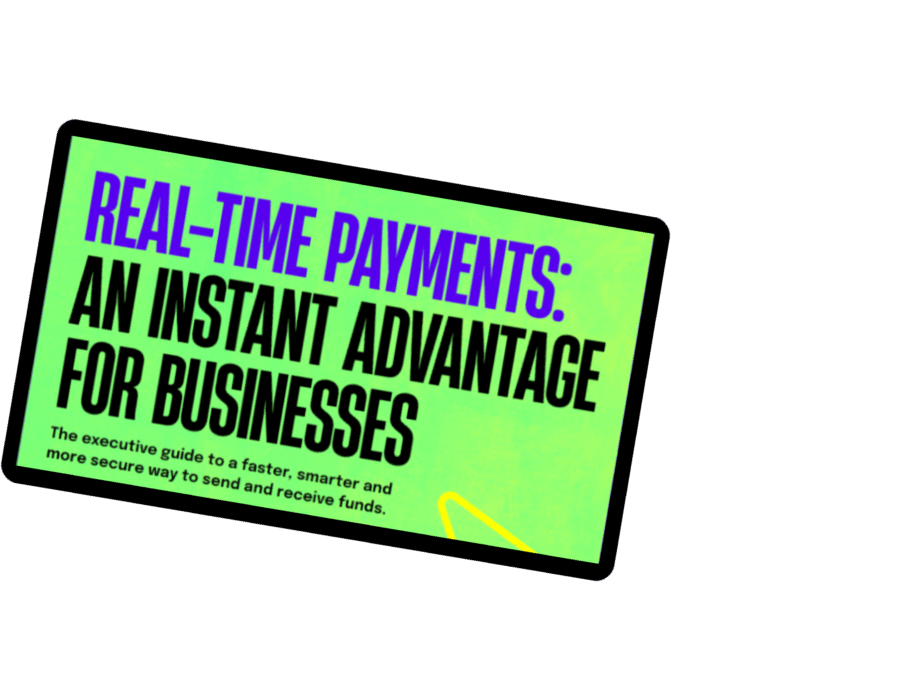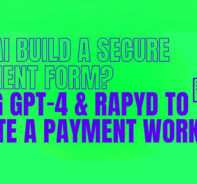Discover how multi-currency virtual bank accounts enable better international financial services.
Open banking and fintech APIs have revolutionized financial services with countless new products, including virtual accounts. Not to be confused with your everyday online bank account, virtual bank accounts offer many unique benefits and capabilities that make them essential tools for global business.
If you are wondering what a virtual bank account is, how virtual account issuing works, and how it is different from a traditional bank account, you’re not alone.
What’s a Virtual Bank Account?
Table of Contents
- What’s a Virtual Bank Account?
- Benefits of Virtual Bank Accounts
- REAL-TIME PAYMENTS: AN INSTANT ADVANTAGE FOR BUSINESSES
- What is a virtual International Bank Account Number (vIBan)?
- How Do vIBANs Work?
- Sample Virtual Account Use Cases
- Should You Issue Virtual Bank Accounts?
- Leverage Virtual Bank Accounts and Issuing For Global Growth
- Virtual Accounts with Rapyd: Borderless Banking, Limitless Possibilities
A virtual bank account is a type of account that can be operated fully online through a mobile or desktop interface and functions similarly to a traditional bank account. However, virtual accounts offer additional benefits ranging from speed to security to multi-currency capabilities, making them invaluable tools for merchants looking to expand their business overseas.
Benefits of Virtual Bank Accounts
- Multiple Currency Accounts: With virtual bank accounts, you can pay and receive money in multiple currencies from other countries – all while being domiciled in a completely different country. For instance, a merchant domiciled in Singapore could create an account that accepts payments from the United Kingdom in pounds. This means businesses no longer need to set up bank accounts in different countries to gain the benefits of multiple currencies. This capacity reduces costly FX fees and some of the barriers of international business.
- Reduce Barriers: You don’t have to be a local resident to open a virtual bank account in a different country. Virtual account providers let you open online virtual bank accounts in several countries and manage them through a single International Bank Account Number (IBAN) account. Some virtual accounts allow integration with third-party global payment platforms to accept multi-currency payments.
- Save Time: Opening a virtual bank account is not as time-consuming as traditional banking. With virtual accounts, you don’t have to stand in long queues at the bank or fill out lengthy paper forms. After completing the KYB process, you can open an account and transact from the comfort of your home in a few clicks and spend your time on more crucial business activities.
- More Cost-Effective: Virtual banking can potentially save over 20% of your banking fees (Finextra). Unlike traditional banks with high FX transfer fees, virtual IBAN providers have their own pricing models, typically with small convenience fees and no hidden charges for online transactions.
- Shorter Transaction Processing: Traditional banks take days to weeks to process transactions. Using a virtual account with quick online payment processing speeds up the transfer process, making same-day or nearly instant payments possible for some transactions.
- More Secure: Virtual accounts are more secure than traditional bank accounts by default. Virtual IBANs are encrypted. This safeguards the customer data from scams and hacking. Virtual banks also have to comply with Anti-Money Laundering (AML) and Know Your Customer (KYC) regulations, making them legal and trustworthy.
What is a virtual International Bank Account Number (vIBan)?
Virtual IBANs, also known as virtual International Bank Account Numbers, or vIBANs are virtual bank accounts that are in many ways the same as a traditional IBAN. An IBAN is simply an International Bank Account Number. Bank accounts in the EU and many other places in the world are automatically assigned one. An IBAN is a code of up to 34 numbers and letters that is unique to your bank account that tells a bank or payment provider where to send your payment.
One key difference between vIBANs and regular IBANs is account matching. Normal IBANs are matched 1:1 with a bank account, meaning there’s only one account linked to each unique IBAN. On the other hand, a virtual IBAN can let you have multiple unique vIBANS that all send payments into one central bank account. This means your vIBAN can act as a sub-account of a centralized ‘master’ account, letting your payments be easily routed, tracked and sent internationally.
How Do vIBANs Work?
A virtual IBAN account, also known as vIBAN, lets you accept payments from multiple countries with minimum fuss. Without a vIBAN, you may need to open separate bank accounts in different countries, and a vIBAN account eliminates this lengthy process.
By assigning an IBAN to a digital wallet account, you can receive international payments without any hassle or expense of opening actual bank accounts in the countries where you’re transacting. You can create unique accounts for dedicated customers or geographies to receive money and route all the transactions from these accounts to your master account. You can also automate this entire process to save time.
How to Accept International Payments with vIBANs
To open a virtual bank account, you need to open a master account where all payments will be routed. Once the master account is opened, you can open a virtual account. Fill out the account opening forms and submit them along with your proof of identity and any other documentation required by your vIBAN provider.
Once your virtual account is operational, you can deposit money to the account. You can also set instructions to transfer money from other accounts such as PayPal into the account. Many virtual banks also issue debit cards and checkbooks linked to vIBANS to simplify payment disbursement.
Sample Virtual Account Use Cases
- Efficiently collect cross-border payments from your customers
- Create a single account for an international client to easily make a recurring payment
- Use a virtual account as a business to pay your overseas workers or contractors and reduce foreign transaction fees
- Sellers on marketplace platforms can receive international payments quickly
With so many use cases for virtual accounts, you may be wondering where and how to get your own virtual account or if issuing your own could make sense for you.
Should You Issue Virtual Bank Accounts?
It’s easy to see why businesses are eager to use virtual accounts and even begin issuing their own. However, issuing virtual accounts comes with complications that must be fully understood. Here is an overview of the pros and cons of issuing virtual bank accounts.
Pros of Issuing
- Virtual accounts give you the ability to transfer money to employees, contractors and other stakeholders in near-real-time
- You can provide virtual accounts to workers and contractors that may otherwise be unbanked
- Issuing your own virtual accounts can significantly reduce transaction fees, especially when transferring funds cross-border
- Integrating virtual accounts into your apps or product offerings builds loyalty and helps to create an ecosystem of products and services that can transform a traditional app into a super app
- Because you control the bank accounts, you can add on other features like rewards programs and card issuing to grow adoption and loyalty.
Cons of Issuing
- There are significant compliance and regulatory considerations, such as ID Verification, Know Your Business (KYB) and Know Your Customer (KYC) requirements, businesses looking to add virtual account issuing should consider a partner that can manage compliance and regulations.
- Consider the ways your customers can make deposits, withdraw funds or make payments – will virtual accounts be able to fulfill these needs? Virtual card issuing is a complimentary service that may help meet the needs of your virtual account holders.
Leverage Virtual Bank Accounts and Issuing For Global Growth
Digital transformation has never been more crucial to financial services and fintech organizations looking to thrive and grow in the current climate. Virtual bank accounts and account issuing are great ways to embrace digitalization. Offering your customers and employees the ability to pay and be paid via virtual accounts is a powerful feature that can’t be overlooked.
While virtual accounts fulfill much of the functionality of a regular bank account by allowing the account holder to receive, withdraw and distribute funds, they are faster and easier to create and offer many unique time and cost-saving benefits. Just imagine the possibilities that multicurrency virtual bank accounts and virtual account issuing can do for you and your international growth.
Sources
What is Virtual Banking? – A Complete Guide | Techfunnel.” 3 Jul. 2020, https://www.techfunnel.com/fintech/virtual-banking/.
Virtual IBANs: Everything You Need to Know – Finextra.” 29 Apr. 2021, https://www.finextra.com/blogposting/20238/virtual-ibans-everything-you-need-to-know.
“What are Virtual Accounts and How Does a Virtual … – North Loop.” 26 Apr. 2021, https://www.nolobank.com/blog/business/what-are-virtual-accounts-and-how-does-a-virtual-account-differ-from-a-physical-account.
“Virtual Banks Account – B2B Pay.” https://www.b2bpay.co/virtual-bank-account.
How to Open a Virtual IBAN Account Online – Statrys.” https://statrys.com/blog/open-virtual-iban-account. “How a Virtual Banks Account Works | Pocketsense.” https://pocketsense.com/virtual-bank-account-works-9492.html.
Subscribe Via Email
Thank You!
You’ve Been Subscribed.




